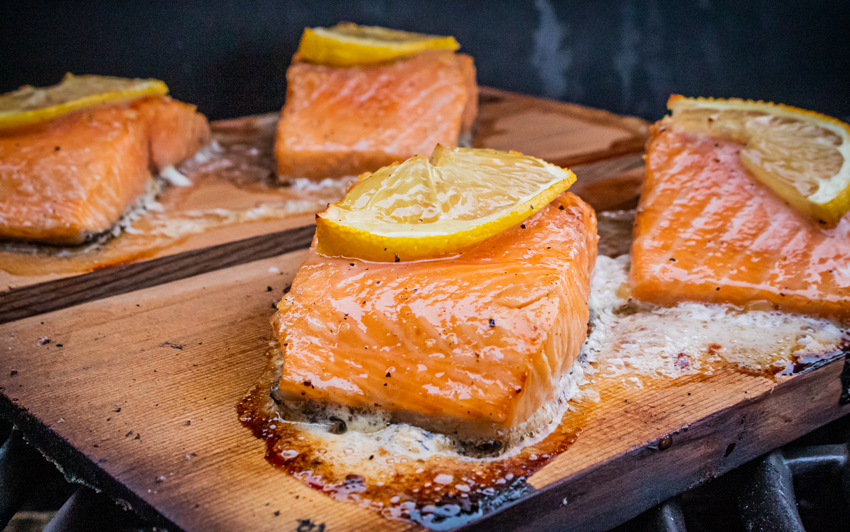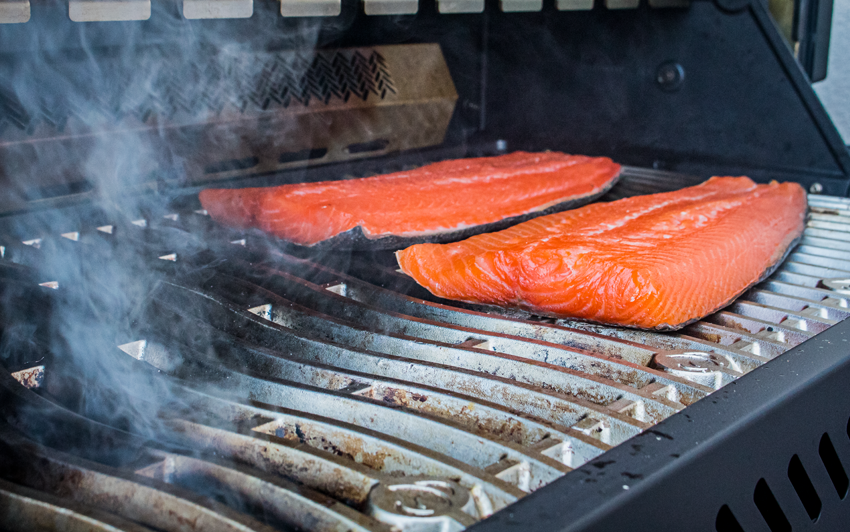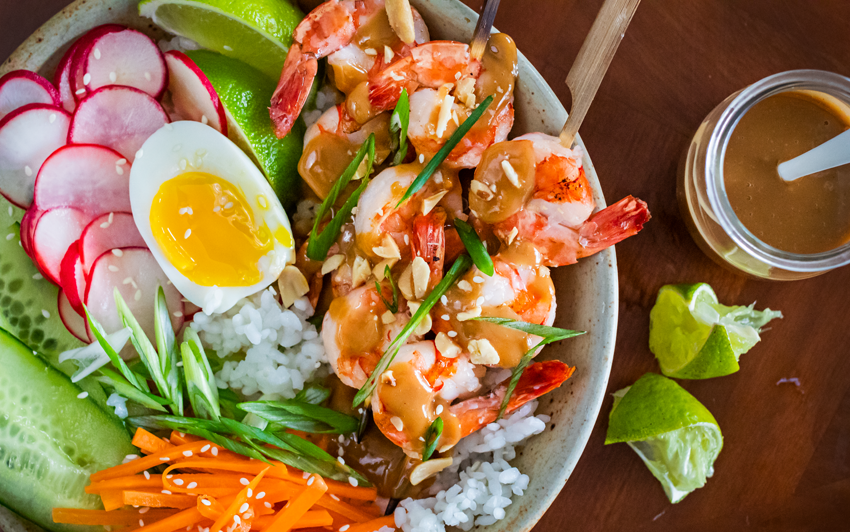
How to Grill Fish on the BBQ
Barbecuing and grilling is easy and fun. It adds incredible flavor and dimension to the foods you love to eat. Red and white meats like beef and chicken are relatively easy to cook, they are hearty and thick. But, how do you barbecue something as delicate as fish? Follow the tips and suggestions below and learn how to grill fish on the barbecue.
Purchasing Seafood
It all starts with purchasing the seafood that you are interested in eating. It is ideal to buy fresh, on the day you intend to cook. Any fresh fish you procure should have clear eyes and shiny scales. All seafood should have a fresh ocean-like smell. If it smells “fishy” or stinky in any way then it is alright to pass on it. If you are buying a whole fish from a fresh market, you can ask for it to be cleaned, gutted, and scaled in-store.
Seasonings, Flavor & Preparation Methods
There is an infinite number of ways to prepare seafood for your next meal. Go simple, there’s nothing like butter, salt, and pepper. Or choose to infuse flavor with interesting preparation methods.
Brining & Marinades
Both brine and marinades only need a short time to be incredibly effective in giving seafood and fish deep flavor before cooking. In just 30 minutes your meal can become stellar. Remember that any acids in your marinade or brine will chemically cook the surface of your seafood so be gentle and don’t exceed 30 minutes.
Spices and Seasonings
Simple seasonings are fantastic on fish. Especially when you have something delightfully flavorful like salmon or trout. Adding citrus is always a great way to enhance any fish, whether you use it in a marinade, as a bed to cook the fish on, or as a finishing touch.
Planks, Barriers & Beds
Once you have seasoned your fish to your heart’s content, cooking can be simple. To prevent sticking or provide a stunning presentation why not try plank grilling the fish. You could also steam it in a packet of foil, use a basket or stainless-steel tray on the grids and you could even lay down a bed of sliced citrus fruit. These prevent the fish from sticking to your barbecue grids. For those who are very adventurous, preheat a Himalayan salt block on the barbecue to sear the fish or seafood on. Just remember that salt blocks provide a salty flavor, so go easy on the seasonings if using one.
Try this recipe for Planked Honey Butter Salmon.
Smoke
You can choose to hot or cold smoke your fish using your gas grill. The setup is the same, it’s just the amount of heat that you use. For hot smoking, the heat will cook the fish while the smoke will flavor it.
Hot Smoking
Set your grill up using your favorite mode for smoking. Learn more about that in our article about smoking on a gas grill. The heat will be the main way of cooking. This will not take long and the smoke flavor will be lighter.
Cold Smoking
Set your grill up using your favorite mode for smoking. This time, instead of using heat to cook the fish, the smoke will, however, you need to prepare the fish using a curing or chemical process first. This technique will take longer. Using only one burner, set as low as possible, below the wood chips you are smoking with will keep the barbecue at a low temperature. Find out the best smoking woods to use for fish.
Try this recipe for Cold Smoked Salmon.
Preparing the Grill
You can use direct, indirect heat, or both by igniting one or two burners and leaving the remaining ones off to create a hot and cool zone on the barbecue. Before you start cooking, ensure that your grids or grates are very clean. You want to preheat the barbecue and any frying pans, griddles, plates, or salt blocks you will be using to cook on. Remember to use a high-heat, neutral-flavored oil to ensure that no sticking occurs if you are cooking directly over flame. When possible, leave the skin on your fish, this helps the fish keep it together while cooking.
How to BBQ Thick & Meaty Fish
These thick and meaty fish consist of salmon, tuna, and more exotic cuts like swordfish. They are generally sold as fillets or steaks and even whole sides. Anything that is about 2-inches (5 cm) thick can be grilled over high heat. Start cooking with the flesh side down for sear marks, then turn over to the skin side to finish. When flipping fish, don’t fight it. If you cannot easily lift the fish from the cooking grids, it isn’t ready on that side. Searing can take 3 to 5 minutes per side.
|
Fish |
Recommended Temperature |
|---|---|
|
Salmon |
Medium - 125°F (52°C) to Well 145°F (63°C) |
|
Halibut |
Medium - 130°F (54°C) to 135°F (57°C) |
|
Tuna |
Rare - 115°F (46°C) never cook more than this or it will be dry and tasteless |
|
Swordfish |
Medium-Well 145°F (63d°C) |
Try this thick and meaty Side of Trout recipe.
How to Cook Small or Delicate Fish
Consisting of fish like bass, cod, haddock, and catfish, these more delicate fish have a harder time keeping it together when being cooked directly on the barbecue. Instead, use a barrier like grilling planks, a salt block, foil packet, or cast iron frying pan. Another great idea is using a preheated pizza stone with parchment paper as a barrier. Cooking smaller bites like scallops and shrimp can be easier to manage when using a grill basket or skewers.
|
Fish |
Recommended Temperature |
|---|---|
|
Halibut |
Medium - 130°F (54°C) to 135°F (57°C) |
|
Bass |
140°F (60°C) |
|
Cod |
145°F (63°C) |
|
Catfish |
145°F (63°C) |
|
Haddock |
145°F (63°C) |
|
Lobster |
140°F (60°C) never cook more than this or it will be tasteless and rubbery |
|
Shrimp |
120°F (49°C) |
|
Scallops |
130°F (54°C) |
While this recipe suggests using the charcoal barbecue, you can use a gas grill to barbecue this whole lobster too.
How to Cook a Whole Fish
You can cook whole fish, not just sides or steaks and filets. Once the fish is cleaned and gutted, you just need to cut a few slits through the skin on both sides, then thoroughly season inside and out. Fill the cavity with sliced citrus and/or herbs. It is recommended that you use indirect heat to grill whole fish, but you can finish it by crisping the outside over direct heat as needed.
How do you Know it's Ready?
Your fish is ready by the internal temperature as indicated above. You can also test this by checking to see if it flakes easily and is opaque in the thickest area. Another indication, without using a meat thermometer would be to use a metal skewer or knife, inserted into the thickest meat. When removed after a few seconds, if the metal is warm to the touch, the fish should be cooked or very nearly so. The general rule is 10-minutes of cooking to every inch (2.5 cm) of thickness.
Try this Asian-style Shrimp Bowl recipe for something super delicious
Now that you know how to grill fish on the barbecue, what will you make? Try all of our sumptuous seafood recipes from the Napoleon website and tell us your favorite. Remember, when cooking fish, what works for one cut of fish may not work for another. Much like when cooking other meats. Share your favorite seafood recipes, success stories, and photos with us on our social pages like Instagram and Facebook. Don’t forget to use the hashtags #NapoleonEats and #FreestyleGrilling!




